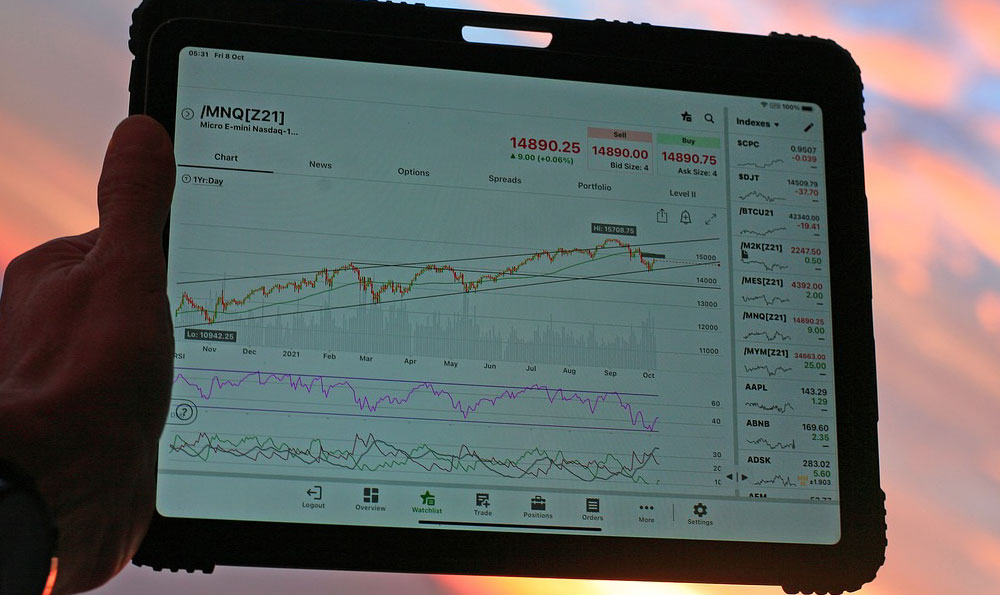Amazon's Annual Revenue and Net Profit Report: How Much Does It Earn Really?
Amazon dominates headlines, consumer spending, and cloud infrastructure. Its staggering scale often overshadows a critical question: amidst the colossal revenue, how much profit does Amazon actually bank? While top-line figures are undeniably huge, the journey from gross sales to net profit reveals a complex, strategic, and sometimes surprising financial reality. Let's dissect the numbers behind the behemoth, specifically focusing on its core North American and International segments alongside the powerhouse AWS, and uncover the true profitability engine driving Bezos's empire.
Beyond the Billions: Dissecting Amazon's Colossal Revenue Streams
For 2023, Amazon reported total net sales of a staggering $574.8 billion. To grasp the magnitude: * That's roughly $1.57 billion flowing in every single day. * Equivalent to the nominal GDP of countries like Poland or Sweden. * A testament to its pervasive presence across global commerce and technology.

However, this gargantuan figure is far from monolithic. Revenue flows through distinct pathways: Online Stores: The foundation. This encompasses everything sold directly by Amazon to consumers globally. Historically the largest segment, it remains massive but growth has moderated as other streams accelerate. Physical Stores: Primarily Whole Foods Market. While contributing revenue, its profitability is a subject of ongoing debate and restructuring. Third-Party Seller Services: A crucial (and highly lucrative) pillar. Amazon charges fees for fulfillment (FBA), commissions, and other services to millions of third-party sellers. This segment provides significant margin and scales efficiently. Subscription Services: Prime subscriptions are the crown jewel here. Annual and monthly fees generate massive, recurring high-margin revenue, fostering loyalty and driving higher purchase frequency. Advertising Services: A fast-rising star. Advertising has become Amazon's third major profit pillar. Businesses pay handsomely to promote products within Amazon's search results and across its properties (like Twitch, IMDb TV). It boasts impressive margins. Amazon Web Services (AWS): The undisputed profitability engine. Cloud computing services for businesses, governments, and startups. AWS holds a commanding market share and generates immense profits relative to its revenue contribution.
Decoding Profitability: Where Does Amazon Make Its Real Money?
Seeing $574.8 billion in revenue often leads to assumptions of equally astronomical profits. Reality is more nuanced. Amazon reported operating income of $36.9 billion for 2023. The key factors bridging the gap between gross sales and net profit include:
- The Cost of Doing (Massive) Business: Selling vast quantities of physical goods incurs enormous costs – primarily Cost of Sales (inventory procurement, manufacturing). This is Amazon's single largest expense category.
- Fulfillment: The Price of "Free" Shipping: Operating a global logistics network – warehouses, sortation centers, delivery stations, aircraft, vans – to support its fast (Prime) shipping promises is astronomically expensive (Fulfillment Expenses).
- Tech Isn't Free: Keeping the Wheels Turning: Technology and Content costs fund the constant development and upkeep of its websites, apps, AWS infrastructure, streaming content libraries (like Prime Video), and Alexa/AI research. Significant sums are also poured into Marketing (driving Prime sign-ups, product awareness) and General & Administrative (corporate overhead, salaries).
AWS: The Profit Powerhouse
No discussion of Amazon's true earnings is complete without focusing intensely on AWS. While contributing "only" $90.8 billion (around 16%) of Amazon's total 2023 revenue, AWS generated an operating income of $24.6 billion – a staggering 67% of Amazon's total operating income.
Consider these metrics: * AWS Operating Margin: Consistently hovers around 27-30%, dwarfing the often low-single-digit margins (or even losses historically) in the core commerce segments. This exceptional profitability stems from the high-value, scalable nature of cloud services and AWS's dominant market position. * Scale and Stickiness: AWS benefits from massive economies of scale. Its vast infrastructure and comprehensive suite of services create significant barriers to entry and lock-in for enterprise customers, supporting premium pricing. * Funding the Future: Crucially, the massive profits generated by AWS have historically subsidized aggressive investments and expansion in Amazon's other, lower-margin businesses. This strategic cross-subsidization has fueled its empire-building.
The Strategic Trade-Off: Investment vs. Quarterly Profit
Amazon is notoriously known for its philosophy of prioritizing long-term market leadership and customer obsession over maximizing short-term quarterly earnings. This manifests as:
- Relentless Reinvestment: A significant chunk of its operating cash flow (over $36 billion in capex for 2023 alone) is channeled back into new fulfillment centers, data centers, transportation networks, R&D (like Project Kuiper satellites), acquisitions (like MGM), and entering new markets (e.g., healthcare).
- Accepting Lower Margins: Deliberately offering competitive (low) prices combined with expensive, fast shipping keeps customers loyal but squeezes margins in its core commerce segments. Heavy discounts on devices (Echo, Fire TV) prime consumers for higher-margin ecosystem spending (services, content).
- Betting on the Long Game: This aggressive reinvestment strategy aims to widen its "moat," secure enduring competitive advantages, and capture more future customer spend, even at the cost of showing significantly less profit today than its vast revenues might suggest it could.
My view? While Wall Street sometimes balks, this calculated aggression has built an unparalleled ecosystem that competitors struggle to replicate. However, the balancing act between growth spending and demonstrating sustainable core profitability is becoming increasingly crucial as the company matures.
Beyond the Headlines: Challenges and Future Earnings Potential
Reaching Amazon's stratospheric earnings level brings immense challenges impacting its net profit profile:
- Regulatory Scrutiny: Intensifying globally, focusing on potential antitrust issues across e-commerce (marketplace vs seller), cloud (AWS dominance), and logistics. Significant fines or mandated structural changes could dent future profits.
- Saturation Shifts: Core e-commerce growth in major Western markets is maturing. The relentless pace of fulfillment spending may need recalibration, potentially opening a path to improving retail margins.
- Cloud Competition: AWS faces fiercer competition from Microsoft Azure and Google Cloud Platform. While still the leader, maintaining premium pricing and those exceptional ~30% margins requires continuous innovation and could face pressure.
- The India Dilemma: Heavy, ongoing losses in one of the world's largest and fastest-growing markets impact overall International profitability significantly. The path to monetizing this massive investment remains a critical question for long-term global profit growth.
The "Profit" Picture: It's Not Just a Number
So, what is Amazon's net profit? For 2023, it stood at $30.4 billion. Yes, massive. But what's truly revealing: * Profitability is deeply uneven: AWS and Advertising are high-margin stars, while core commerce often operates on thin ice and International struggles. * Free Cash Flow is Paramount: Amazon often emphasizes this metric ($36.8 billion trailing twelve months ending Q1 2024) as a key indicator of its ability to fund operations and invest heavily without constantly relying solely on external funding. It signals fundamental business health beyond pure net income accounting. * The Power of Flywheels: The real genius lies in how segments feed each other. Prime fuels core retail sales and subscriptions. Core retail attracts sellers and advertisers. Seller/AWS data helps target advertising and improve logistics/efficiency. This interconnectedness creates resilience and long-term customer value that isn't fully captured on a simple quarterly P&L. * My Skepticism: I remain highly doubtful about the long-term profit profile of the physical stores (Whole Foods) venture beyond brand halo and Prime integration. The grocery margin battle is fierce, and the integration costs have been substantial.
While $30 billion net profit is undeniably huge, understanding Amazon requires looking through that number to the engines powering it (AWS, Ads, Services) and the massive investments (fulfillment, tech, future bets) funded by those profits. The company isn't just chasing near-term net income; it's wielding its vast revenue and calculated profit as fuel to build an ecosystem poised to dominate the digital future. The question isn't solely "how much does it earn now?" but "how much ecosystem value is it building for the decades ahead, and what ultimate profit potential does that unlock?"
Q&A: Demystifying Amazon's Earnings
-
Q: Amazon has massive revenue – why isn't its net profit proportionally gigantic? A: Due to its enormous operating costs (Cost of Sales, Fulfillment, Tech infrastructure), heavy strategic reinvestment (building warehouses, data centers, new ventures), and deliberately low margins on core retail to drive growth and customer loyalty. Highly profitable segments (AWS, Ads) subsidize aggressive investment elsewhere.
-
Q: If core retail is so low-margin, how is Amazon so profitable overall? A: Key lies in diversification beyond physical goods: AWS (cloud computing) and Advertising Services are incredibly high-margin businesses. Subscription services (Prime) provide sticky, recurring revenue. Third-party seller services generate significant fees with relatively low cost to Amazon.
-
Q: What really drives the majority of Amazon's profit? A: Amazon Web Services (AWS) is the undisputed profit engine. Despite contributing only ~16% of total revenue in 2023, AWS generated nearly 67% of Amazon's total operating income. Its cloud infrastructure services enjoy profit margins (~27-30%) far exceeding its other segments.
-
Q: Does Amazon make most of its money from selling online stuff? A: Not primarily from the profit. While online stores generate a massive portion of the revenue, a large share of the actual earnings (profit) comes from AWS, Advertising revenue (paid promotions on its site), fees from third-party sellers, and subscriptions (especially Prime membership fees).
-
Q: Why does Amazon spend so much money even though it makes huge profits? A: It's a core strategy. Amazon famously plows vast sums back into the business: rapidly expanding its logistics network (fulfillment centers, delivery systems), building data centers for AWS, funding R&D for new tech (Alexa, AI), acquiring companies (like MGM), and entering new markets (like healthcare). This prioritizes long-term dominance over maximizing short-term profit.












